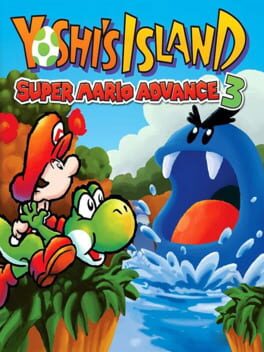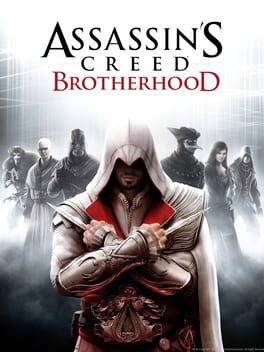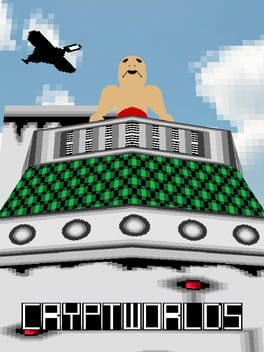Moof
3 reviews liked by Moof
A shining beacon in my ever fading memories of childhood, Yoshi’s Island reenters my adult life as a pastel coloured flashback. The game, boasting its vibrant, cheerful atmosphere, taps directly into blurred memories of car rides home from grandma’s. The joyful sounds of the Yoshis themselves forming songs which evoke late night gaming sessions lit only by a bedside lamp that ought to have been turned off hours ago if I wasn’t to be tired at school in the morning.
My grandmother’s house has since been demolished, and my childhood has since been replaced by an ever growing list of ambitions, obligations, and responsibilities. My Yoshi’s Island cartridge, in contrast, remains the same; it holds the same code needed to run on my Game Boy Advance, and the same save files created all those years ago. Still, even if Yoshi’s Island itself has not changed, the lens through which I’m meant to inspect it, tinted-by-nostalgia as it may be, has been altered by the passage of time.
Games enjoyed in childhood often fail to prove their worth again. Patience is worn thin by frustrating levels, design intentions are rendered moot by modern sensibilities, and on a more enigmatic level, they just don’t feel the same. When the curtain of childlike wonder is pulled back, and our analytical minds are no longer shielded from the experience of actually playing, it takes a hell of a good game to maintain its favour.
Despite this sentiment, Yoshi’s Island manages to both impress me in the modern era of gaming, as well as justify its ineffable worthiness forged by my nostalgia-fueled memories. Set forth by its stunning visuals and maintained by its meticulously crafted gameplay experience, Yoshi’s Island is more than a happy memory, and even more than a timeless classic. It’s one of gaming’s greatest.
Before even a save file has been selected, Yoshi’s Island presents the player with its charm in the form of a storybook-esque movie sequence. Filled with a mix of clay-like models and watercolour backgrounds, the story set forth is simple, the Yoshis must deliver a lost baby Mario to his captured brother and save him from the evil Kamek. What the game makes clear, however, is that the gameplay itself is not merely a result of this story, but a continuation of it.
It’s an obvious statement, asserting that a game’s story continues beyond the intro and into play, but it’s Yoshi’s Island thematic commitment to that notion that drives its charm. Gameplay maintains the watercolour palette, but with a gorgeous art style reminiscent of children’s book illustrations.
Through flowery fields and sparkly caves, tropical lakes and snowy mountains, everything the player sees is oozing childlike charm. Highlights are bright and shadows are faint. Everything smiles, with exceptions only for characters with no mouth or big goofy teeth. Animation is smooth and lively, eyes are dotted and googly, and even the angriest of characters are made to look silly. To be frowning while playing Yoshi’s Island is to be a curmudgeon.
This vibe of the game - its art direction and presentation, the sensory feel it provides - is practically begging to plant itself into a young mind. It’s a visual masterpiece. It’s bright, colourful, and cheery - emanating an aura that thrusts warm and fuzzy feelings upon the player. However, it’s in the more agentive and invisibly-designed aspects of Yoshi’s Island - the things you only notice during gameplay - that the game soars beyond childhood favourite and emerges as a gaming paragon.
Yoshi’s controls are as responsive as they are free. That is to say the myriad of actions the player can take feel natural and are performed with ease. With just the dpad, two face buttons, and two shoulder buttons (the left shoulder button seldom seeing use in my playthrough), the player can perform the following in regular play: Jumping, flutter jumping, sticking Yoshi’s tongue out, spitting out enemies, ground pounding, egg aiming, egg throwing, and stopping your aim reticle from its automatic repositioning.
Despite having so many unique actions - some of which are altered by dpad directions, or holding a button longer - everything works together in an exciting way that avoids overwhelming the player, while still allowing for advanced play. Yoshi’s tongue is used only if an enemy is not in his mouth, and flutter jumps are only performed if he is already in the air, but the ability to throw eggs is independent of both, allowing a skilled player to take aim in more perilous situations.
Level design compliments this freedom of control by means of freedom of directionality. Compared to Super Mario World, Yoshi’s Island manages fewer branching paths and secret exits, but more than makes up for it in its level layouts. Levels go beyond left-to-right; they go up, down, and all around, even within the same section of level. Yoshi flutters his way through vertical climbs, ricochets eggs through maze-like passageways, and even transforms into motorized vehicles to soar through skies and drive down hills.
This variety in obstacle layout does come to bite Yoshi’s Island every once in a while. There’s long pits that a mountain-skiing Yoshi is sure to fall into, and sections to be redone when you learn that lava is insta-kill. To top it off, players going for a perfect score each level are in for a far more intense experience. Collectibles are well hidden, or even lost when damage is taken. But to call these game-ruining would be insincere when that variegation is what makes Yoshi’s Island so special.
Boss fights in particular speak to this. They test the player’s skills in new and exciting ways, all while holding the most charming moments of the game. The world 3 boss in particular subverts expectations, when Kamek - normally one to transform regular enemies into big baddies - uses magic on Yoshi himself, shrinking him down and giving the player the wobbly playing field of Prince Froggy’s innards. It’s moments like these - where novel concepts become novel spectacles, and novel spectacles become novel interactions - that boost Yoshi’s Island into gaming stardom.
But lest I forget the small moments. From the short but catchy overworld music that adds instruments as you progress, to the real sense of urgency when you must rescue a crying baby Mario after taking damage, Yoshi’s Island does more than bridge the gap between my Mad Catz Game Boy Advance light and my newly installed backlit screen mod. It cements itself as a game I was lucky to have played so young, lucky to have played now, and will be lucky to play again.
It takes a hell of a game to prove its worthiness when it’s been fueled by over a decade of vague nostalgia, but as much as my life and the world surrounding it has changed, the only thing that’s changed about Yoshi’s Island is my appreciation for it. Like myself, it has only grown.
My grandmother’s house has since been demolished, and my childhood has since been replaced by an ever growing list of ambitions, obligations, and responsibilities. My Yoshi’s Island cartridge, in contrast, remains the same; it holds the same code needed to run on my Game Boy Advance, and the same save files created all those years ago. Still, even if Yoshi’s Island itself has not changed, the lens through which I’m meant to inspect it, tinted-by-nostalgia as it may be, has been altered by the passage of time.
Games enjoyed in childhood often fail to prove their worth again. Patience is worn thin by frustrating levels, design intentions are rendered moot by modern sensibilities, and on a more enigmatic level, they just don’t feel the same. When the curtain of childlike wonder is pulled back, and our analytical minds are no longer shielded from the experience of actually playing, it takes a hell of a good game to maintain its favour.
Despite this sentiment, Yoshi’s Island manages to both impress me in the modern era of gaming, as well as justify its ineffable worthiness forged by my nostalgia-fueled memories. Set forth by its stunning visuals and maintained by its meticulously crafted gameplay experience, Yoshi’s Island is more than a happy memory, and even more than a timeless classic. It’s one of gaming’s greatest.
Before even a save file has been selected, Yoshi’s Island presents the player with its charm in the form of a storybook-esque movie sequence. Filled with a mix of clay-like models and watercolour backgrounds, the story set forth is simple, the Yoshis must deliver a lost baby Mario to his captured brother and save him from the evil Kamek. What the game makes clear, however, is that the gameplay itself is not merely a result of this story, but a continuation of it.
It’s an obvious statement, asserting that a game’s story continues beyond the intro and into play, but it’s Yoshi’s Island thematic commitment to that notion that drives its charm. Gameplay maintains the watercolour palette, but with a gorgeous art style reminiscent of children’s book illustrations.
Through flowery fields and sparkly caves, tropical lakes and snowy mountains, everything the player sees is oozing childlike charm. Highlights are bright and shadows are faint. Everything smiles, with exceptions only for characters with no mouth or big goofy teeth. Animation is smooth and lively, eyes are dotted and googly, and even the angriest of characters are made to look silly. To be frowning while playing Yoshi’s Island is to be a curmudgeon.
This vibe of the game - its art direction and presentation, the sensory feel it provides - is practically begging to plant itself into a young mind. It’s a visual masterpiece. It’s bright, colourful, and cheery - emanating an aura that thrusts warm and fuzzy feelings upon the player. However, it’s in the more agentive and invisibly-designed aspects of Yoshi’s Island - the things you only notice during gameplay - that the game soars beyond childhood favourite and emerges as a gaming paragon.
Yoshi’s controls are as responsive as they are free. That is to say the myriad of actions the player can take feel natural and are performed with ease. With just the dpad, two face buttons, and two shoulder buttons (the left shoulder button seldom seeing use in my playthrough), the player can perform the following in regular play: Jumping, flutter jumping, sticking Yoshi’s tongue out, spitting out enemies, ground pounding, egg aiming, egg throwing, and stopping your aim reticle from its automatic repositioning.
Despite having so many unique actions - some of which are altered by dpad directions, or holding a button longer - everything works together in an exciting way that avoids overwhelming the player, while still allowing for advanced play. Yoshi’s tongue is used only if an enemy is not in his mouth, and flutter jumps are only performed if he is already in the air, but the ability to throw eggs is independent of both, allowing a skilled player to take aim in more perilous situations.
Level design compliments this freedom of control by means of freedom of directionality. Compared to Super Mario World, Yoshi’s Island manages fewer branching paths and secret exits, but more than makes up for it in its level layouts. Levels go beyond left-to-right; they go up, down, and all around, even within the same section of level. Yoshi flutters his way through vertical climbs, ricochets eggs through maze-like passageways, and even transforms into motorized vehicles to soar through skies and drive down hills.
This variety in obstacle layout does come to bite Yoshi’s Island every once in a while. There’s long pits that a mountain-skiing Yoshi is sure to fall into, and sections to be redone when you learn that lava is insta-kill. To top it off, players going for a perfect score each level are in for a far more intense experience. Collectibles are well hidden, or even lost when damage is taken. But to call these game-ruining would be insincere when that variegation is what makes Yoshi’s Island so special.
Boss fights in particular speak to this. They test the player’s skills in new and exciting ways, all while holding the most charming moments of the game. The world 3 boss in particular subverts expectations, when Kamek - normally one to transform regular enemies into big baddies - uses magic on Yoshi himself, shrinking him down and giving the player the wobbly playing field of Prince Froggy’s innards. It’s moments like these - where novel concepts become novel spectacles, and novel spectacles become novel interactions - that boost Yoshi’s Island into gaming stardom.
But lest I forget the small moments. From the short but catchy overworld music that adds instruments as you progress, to the real sense of urgency when you must rescue a crying baby Mario after taking damage, Yoshi’s Island does more than bridge the gap between my Mad Catz Game Boy Advance light and my newly installed backlit screen mod. It cements itself as a game I was lucky to have played so young, lucky to have played now, and will be lucky to play again.
It takes a hell of a game to prove its worthiness when it’s been fueled by over a decade of vague nostalgia, but as much as my life and the world surrounding it has changed, the only thing that’s changed about Yoshi’s Island is my appreciation for it. Like myself, it has only grown.


